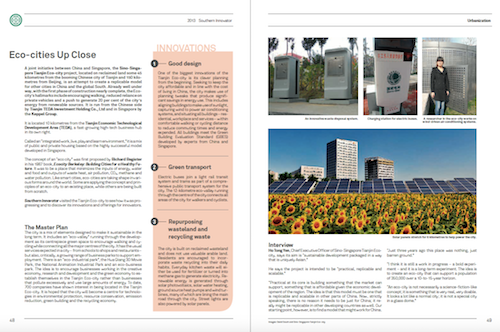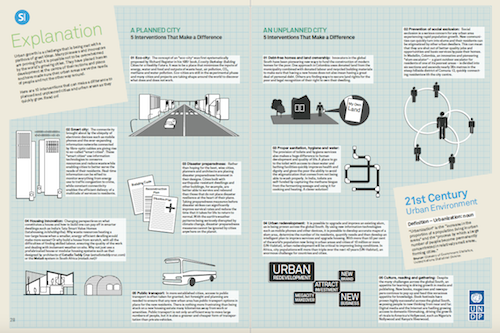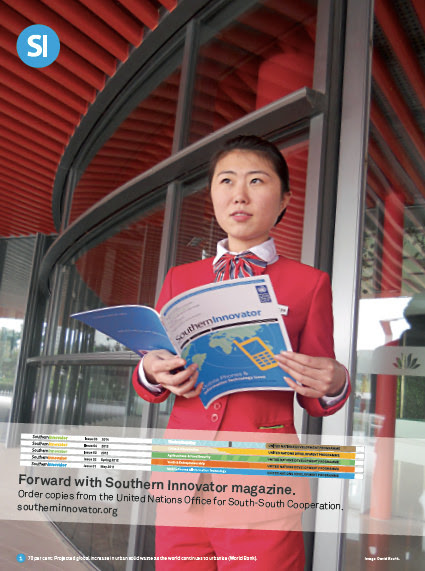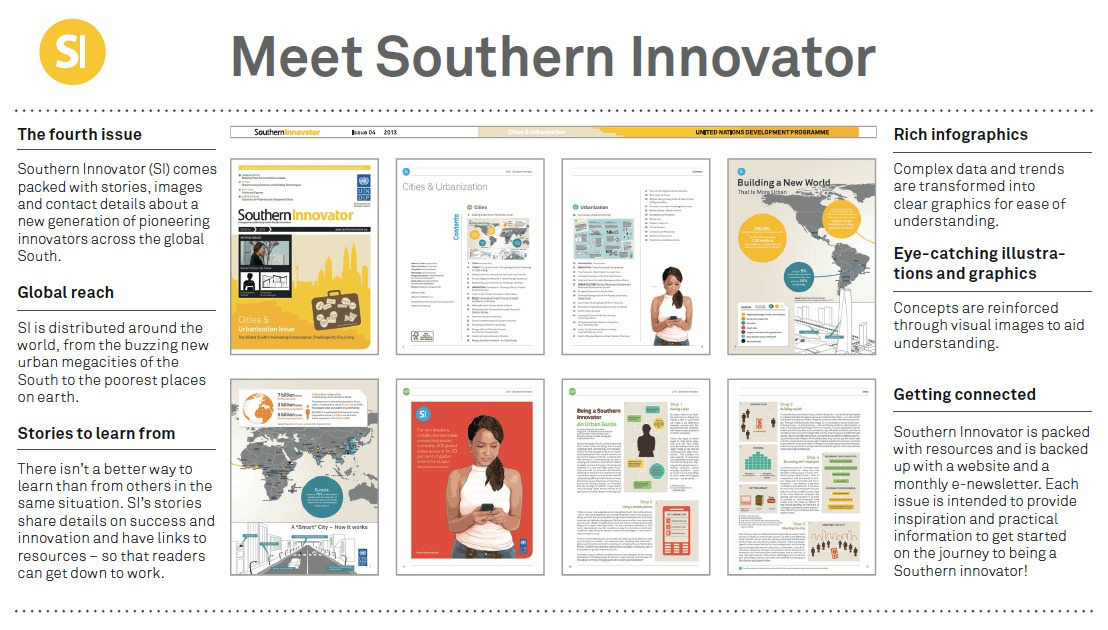
Many emerging-market countries in the global South have built up substantial foreign currency reserves. Much of this has been a response to past foreign currency crises, particularly the Asian Crisis in the late 1990s (http://en.wikipedia.org/wiki/1997_Asian_financial_crisis).
But what to do with this often vast wealth? How should it be used to improve economies, human development and people’s lives?
China — whose foreign currency reserves reportedly total US $3.7 trillion — is showing one approach, using the wealth to build industrial capability in sectors traditionally associated with more developed countries, such as aircraft manufacturing.
China is seeking to build a commercial airliner able to compete with the sector’s longstanding giants, Boeing and Airbus. To ensure it can do it to the highest global standards, it is outsourcing much of the parts manufacturing to the best around the world, while keeping the overall design and assembly in China.
Comac, or Commercial Aircraft Corporation of China, Ltd. (http://english.comac.cc/products/ca/pi/), is located outside Shanghai, China’s rapidly growing global business hub. The modern Comac factory is working on building China’s first commercial airliner, the C919. It is also making a smaller jet, the ARJ21.
Comac calls the outsourcing method an “airframer supplier” model. Suppliers provide the components, and Comac designs and assembles the plane.
Countries making the parts include the United States, France, Ireland, the United Kingdom, Austria, Switzerland and Japan.
Comac’s dream is to graduate to the top tier of global aircraft manufacturers alongside Boeing and Airbus, which together account for 70 per cent of the global commercial airliner market (Fortune).
At present, this is just an aspiration, with a detailed life-sized plastic model of the C919 – right down to the intricacies of the cockpit instrument panels — all there is to show for the project.
Founded in 2008, Comac ambitiously aims to be making and selling commercial airliners within a decade. State-owned Comac is an amalgamation of various aviation companies, as previous efforts to make a commercial airliner in China had failed. China has invested US $3 billion in the venture.
The name, C919, breaks down as C for China, 9 because it sounds similar to the Chinese word for forever, and 19 because it will carry 190 passengers.
The idea is to target the city-to-city aircraft market which is dominated by Boeing’s 737 and Airbus’s A320.
China saw huge aviation growth in the first decade of the 21st century, and is expecting that trend to continue. The country is on track to surpass the United States for airline-passenger traffic by 2032 and is already the world’s second largest market (Fortune).
To feed this fast-growing market, China will need an estimated 5,580 new planes by 2032, costing US $780 billion in today’s prices (Boeing).
China has decided, rather than committing this vast investment to purchasing all the aircraft from overseas manufacturers, to instead use this wealth to build a competitive aircraft manufacturing industry to rival the big leaders. This would create jobs in the country and create a multiplier effect as airline industry investment helps the domestic economy.
China already has years of experience manufacturing aircraft parts for foreign companies. Comac makes the tail section of Boeing’s 737, as well as manufacturing cargo door frames for the Airbus’ A320.
More importantly, since 2009 China has assembled A320s for Airbus under license in Tianjin — 130 of them to date (http://www.airbus.com/company/worldwide-presence/airbus-in-china/).
The C919 is similar in some ways to the Airbus A320. They have similar dimensions and are made from similar materials. Comac has hired over 100 foreign experts to help with the project, to ensure quality control meets global standards.
By trying to compete with the world’s best, China is entering a very competitive and complex marketplace. The complexity of modern aircraft (an average of 4 million parts in a typical commercial airliner) means there is no room for mistakes or cutting corners. And this is where China has to change its reputation. The country has experienced several high-profile manufacturing failures due to corner-cutting and corruption. These have included tainted milk products, poorly constructed buildings that collapsed, and high-speed train crashes.
The C919 is an opportunity to show high standards and high quality can be the norm in Chinese manufacturing.
In the 1970s, China designed and built the Y-10 (http://en.wikipedia.org/wiki/Shanghai_Y-10) in Shanghai, modeled on Boeing’s 707. But it was a failed programme, shut down after the plane flew once.
Those behind the new plane acknowledge that this is a learning experience for China: “Comac must learn how to walk first before running,” Comac chairman Jin Zhuanglong told Fortune magazine.
“I’ve always maintained the point that we won’t be a big challenge for Airbus or Boeing in the short term,” said Jin, who used to work in China’s satellite and spacecraft industry. “But in terms of some single product, we might be competitive.”
There’s no doubt that China needs planes. China will have constructed 80 new airports between 2011 and 2015 (China Daily). It has already received 1,000 Airbus planes for domestic carriers, quickly bringing fleets to international standards.
State-owned airlines, including China Air, China Southern and China Eastern, dominate 80 per cent of flights. All stand to be a ready market for the C919, which will sell for around US $75 million – US $10 million less than the next generation Boeing 737 and the Airbus A320 (Fortune).
Ireland-based budget airline Ryanair is considering being the first Western airline to purchase the C919.
Ryanair CEO Michael O’Leary is confident people will fly on a Chinese-made plane: “Ninety-nine percent of my passengers don’t know what kind of aircraft they are getting on,” O’Leary told Fortune. “You trust the Chinese to make computers and medical devices, and the question is, Would you get on a Chinese aircraft? Of course!”
Brazil has shown it is possible. The Embraer (embraer.com) aircraft company, based in São José dos Campos, is now a US $6 billion a year success story that has won the public’s trust.
Comac’s C919 project is a risk, but the rewards could be enormous.
By David South, Development Challenges, South-South Solutions
Published: May 2014
Development Challenges, South-South Solutions was launched as an e-newsletter in 2006 by UNDP's South-South Cooperation Unit (now the United Nations Office for South-South Cooperation) based in New York, USA. It led on profiling the rise of the global South as an economic powerhouse and was one of the first regular publications to champion the global South's innovators, entrepreneurs, and pioneers. It tracked the key trends that are now so profoundly reshaping how development is seen and done. This includes the rapid take-up of mobile phones and information technology in the global South (as profiled in the first issue of magazine Southern Innovator), the move to becoming a majority urban world, a growing global innovator culture, and the plethora of solutions being developed in the global South to tackle its problems and improve living conditions and boost human development. The success of the e-newsletter led to the launch of the magazine Southern Innovator.
Follow @SouthSouth1
Google Books: https://books.google.co.uk/books?id=NhQ9BQAAQBAJ&dq=development+challenges+may+2014&source=gbs_navlinks_s
Slideshare: http://www.slideshare.net/DavidSouth1/may-2014-development-challenges
Southern Innovator Issue 1: https://books.google.co.uk/books?id=Q1O54YSE2BgC&dq=southern+innovator&source=gbs_navlinks_s
Southern Innovator Issue 2: https://books.google.co.uk/books?id=Ty0N969dcssC&dq=southern+innovator&source=gbs_navlinks_s
Southern Innovator Issue 3: https://books.google.co.uk/books?id=AQNt4YmhZagC&dq=southern+innovator&source=gbs_navlinks_s
Southern Innovator Issue 4: https://books.google.co.uk/books?id=9T_n2tA7l4EC&dq=southern+innovator&source=gbs_navlinks_s
Southern Innovator Issue 5: https://books.google.co.uk/books?id=6ILdAgAAQBAJ&dq=southern+innovator&source=gbs_navlinks_s

This work is licensed under a
Creative Commons Attribution-Noncommercial-No Derivative Works 3.0 License.
 Monday, November 6, 2017 at 11:25AM
Monday, November 6, 2017 at 11:25AM 
 Eco-cities Up Close in Southern Innovator Issue 4.
Eco-cities Up Close in Southern Innovator Issue 4. An infographic showing planned and unplanned cities.
An infographic showing planned and unplanned cities.  Southern Innovator Issue 4: Cities and Urbanization is published by the United Nations Office for South-South Cooperation (UNOSSC).
Southern Innovator Issue 4: Cities and Urbanization is published by the United Nations Office for South-South Cooperation (UNOSSC). The first five issues of Southern Innovator. The highly influential magazine was distributed around the world and each issue was launched at the annual Global South-South Development (GSSD) Expo hosted by the United Nations Office for South-South Cooperation (UNOSSC).
The first five issues of Southern Innovator. The highly influential magazine was distributed around the world and each issue was launched at the annual Global South-South Development (GSSD) Expo hosted by the United Nations Office for South-South Cooperation (UNOSSC).





